Spinal cord injuries (SCI) are a complex and often misunderstood medical condition. Various factors, such as accidents, diseases, or genetic disorders, can cause them. Despite the prevalence of SCI, there are many myths and misconceptions surrounding this condition. These misconceptions not only perpetuate damaging stereotypes but they can also hinder the understanding and support of those living with spinal cord injuries.
This blog will debunk common myths and share the truth behind these life-changing injuries. So, let's separate fact from fiction and gain a deeper understanding of the realities of spinal cord injuries.

Let’s debunk some of the most common myths and provide factual information about spinal cord injuries.
While it’s true that athletes and individuals involved in traumatic accidents are at a higher risk for spinal cord injuries, they can happen to anyone at any time. The leading cause of SCI is falls, accounting for 31.6% of all cases.
This includes falls from ladders, stairs, and even slips and falls in the home. Other causes of SCI include car accidents, sports injuries, and violence. It’s important to remember that no one is immune to spinal cord injuries.
This is a common misconception that portrays individuals with SCI as wholly immobilized. The truth is that the level and severity of paralysis depend on the location and extent of the injury. For example, a person with a cervical (neck) injury may experience paralysis from the neck down.
In contrast, someone with a lumbar (lower back) injury may have paralysis in the legs but not in the arms. Additionally, individuals with SCI have varying levels of mobility and can lead active and independent lives with the help of assistive devices and therapies.
Another myth about SCI is that only young people have the potential to recover and regain mobility. While it’s true that younger individuals have a higher chance of recovery due to their more robust physical capabilities, that doesn’t mean older individuals can’t make progress as well. With advancements in medical technology and rehabilitation techniques, many older individuals with SCI have shown significant improvement in their condition.
SCI may be a life-changing condition, but it’s not a sentence for a lifetime of suffering with no possibility of recovery. While complete spinal cord healing is impossible, some treatments and therapies can alleviate symptoms and improve function.
These include surgery, medication, physical therapy, and occupational therapy. Additionally, stem cell research and clinical trials show promising results in repairing damaged spinal cords, giving hope for future treatments and potential cures.
Living with SCI may involve chronic pain, but this doesn’t mean that individuals with SCI cannot lead fulfilling and meaningful lives. With proper pain management and support systems, people with SCI can enjoy hobbies, have successful careers, and maintain healthy relationships. It’s also worth noting that every individual’s experience with SCI is unique and shouldn’t be generalized.
Spinal cord injuries not only impact physical abilities but also have a significant impact on one’s mental health. It can lead to feelings of isolation, depression, and anxiety due to changes in lifestyle, limitations, and the constant need for medical care. Addressing mental health is crucial in the overall well-being and recovery of individuals with SCI.
In conclusion, spinal cord injuries are a complex and diverse condition that affects individuals of all ages and backgrounds. While it may be a life-changing event, it’s essential to separate fact from fiction and understand the realities of living with SCI. With advancements in research and technology, there is hope for improved treatments and potential cures. Let’s spread awareness and debunk these myths to create a more inclusive and understanding society for those living with SCI.

SCI can have life-altering consequences for individuals and their families. However, some interesting facts about SCI are worth knowing. Here are some of these facts concisely and informally.
Take control of your recovery journey with NeuLife Rehab, the premier post acute rehabilitation center for spinal cord injuries. Our state-of-the-art facility and individualized treatment plans are designed to help you regain independence and improve your overall quality of life.
In addition to providing exceptional care for spinal cord injuries, we offer various services to support our patients' overall well-being. Our services include:
Don't let a spinal cord injury hold you back. Join our dedicated team of experts and rewrite your story today. Claim your spot in our program now and start on the path to a stronger, healthier you.
Visit our website to learn more about our residential post-acute programs and take the first step towards a healthier, happier life. Let NeuLife be your partner in debunking myths and achieving greatness in the face of a spinal cord injury.

***
The material on this site is for informational purposes only and DOES NOT CONSTITUTE THE PROVIDING OF MEDICAL ADVICE, and is not intended to be a substitute for independent professional medical judgment, advice, diagnosis, or treatment. Always seek the advice of your physician or other qualified healthcare provider with any questions or concerns you may have regarding your health.
It's National Traumatic Brain Injury Awareness Month. Now is the perfect time to look into nutrition therapy to help the brain recover after a traumatic brain injury. Nutrition therapy offers a non-invasive and natural approach to helping the brain overcome this potentially devastating injury.
In this blog, learn how nutrition therapy for TBI can help a brain recover and even benefit those who haven't been diagnosed with TBI. So, let's get started to understand better how nutrition therapy works and how it can help you or someone you love.
Traumatic brain injury or TBI is a severe and sometimes debilitating injury due to a violent blow or jolt to the head. It can result in physical, psychological, cognitive, and/or behavioral deficits. TBI can range from mild to severe and cause loss of consciousness or a prolonged state of being. Common causes of TBI include car accidents, assaults, sports collisions, and falls.
Symptoms may include:
Nutrition is essential to recovery following a traumatic brain injury (TBI). Nutrition therapy helps the brain become healthier and function optimally. It consists of strategies such as eating a balanced diet, consuming specific nutrients, and consuming drugs that help increase nutrient absorption.
A diet with adequate proteins, vitamins, minerals, essential fatty acids, and antioxidants can help the brain get the proper nourishment to recover. Essential vitamins and minerals are needed to provide energy, support neurological functions, and help heal damaged cells. Foods high in protein help the brain repair and create new neurons, while omega-3 fatty acids in fatty fish are essential for optimizing cognitive function.
Following dietary guidelines can ensure the brain receives the proper nourishment to repair existing damage while allowing cells to regrow. With consistent nutrition therapy, the brain can continue to get the essential nutrients it needs for optimal functioning and recovery.

In general, good nutrition is essential for our body and health. But how does it affect our brains? Nutrition plays a massive role in keeping our brain healthy and functioning at its highest capacity.
From infancy to adulthood, good nutrition contributes to proper brain development. A balanced diet with macronutrients and micronutrients aids in brain growth. Macronutrients like proteins, carbohydrates, and fats provide energy and help organs and tissues function. Micronutrients like vitamins and minerals help with metabolic processes and tissue repair. There is a direct correlation between proper nutrition and how it affects cognitive function.
Nutrients, such as omega-3 fatty acids, contribute to cell membranes and improve communication between neurons, positively affecting mental health. Antioxidants in foods like fruits and vegetables protect the brain from damage and prevent dementia and Alzheimer’s. Additionally, a diet low in sugar and processed foods may stimulate areas of the brain associated with attention and executive function.
Adequate hydration is also essential, as it helps the brain function correctly. Dehydration can cause headaches, fatigue, and difficulty concentrating. Our brain needs water to transport chemicals responsible for memory formation and oxygen for energy.
Several different types of nutritional therapy are available for those with traumatic brain injuries.
This type of nutritional therapy typically involves dietary counseling and nutritional guidance tailored to meet the individual’s needs and improve overall brain health.
Sports nutrition therapy helps those with TBI maximize their performance, maintain a healthy body index, and boost their energy levels. It focuses on meal planning, supplementation, hydration, and other health factors.
Mindful eating focuses on helping individuals with TBI become more aware of their hunger signals and emotional responses to food. It also allows the individual with TBI to relax, increase their feelings of control, and build self-confidence around food.
This type of nutritional therapy is designed to identify and address food sensitivities and allergies. It can help those with TBI identify which foods they should avoid and which they should include in their diet to promote physical and mental well-being.

Eating the proper nutrients can help your brain stay healthy and function properly, while a poor diet can put you at greater risk for cognitive decline. Here, we’ll look at how nutrition affects the brain and provide tips for getting the right balance of healthy foods.
Regularly consuming essential vitamins and minerals, such as omega-3 fatty acids, B vitamins, and iron, keeps your brain firing on all cylinders. These essential nutrients assist in the production of neurotransmitters, which promote brain development, cognition, and connection.
With the demands of modern life, having memory and concentration at their peak is key. Regular consumption of omega-3 fatty acids, along with other supplements, can help achieve physical and cognitive performance.
The stress hormone cortisol can damage brain cells over time. Eating a diet rich in vitamin C-containing foods and B vitamins can help reduce cortisol levels and other damaging hormones.
Nutrients like magnesium, omega-3 fatty acids, and B vitamins may reduce the risk of depression and anxiety. Eating foods rich in these vital elements can promote better mental health and reduce your risk of developing mental health issues.
To function correctly, the brain depends on essential nutrients, such as Vitamin A. Vitamin A-containing foods, such as eggs, dairy, and fish, can improve cognitive function and help ensure the brain operates optimally.
Eating a diet loaded with iron, magnesium, B vitamins, and other brain-supporting nutrients can help boost mental stamina and energy, allowing you to better focus on tasks and think more clearly.
By taking care of your nutrition needs, you’ll be able to reap the cognitive benefits of improved brain activity, better memory and concentration, stress reduction, and increased mental stamina. So, consume these essential vitamins and minerals to help keep your brain healthy and functioning correctly.
If you or a loved one have experienced a traumatic brain injury and are trying to recover, Neulife is here to help!
Our team specializes in post-acute rehab to help accelerate the healing process. Thanks to our innovative and comprehensive neuro rehabilitation program, including nutrition therapy, traumatic brain injury rehabilitation, and cognitive therapy, Neulife can help you or a family member unlock the healing potential of the brain and begin the journey to recovery.
Take the first step towards a healthy future. Contact us today and learn how nutrition therapy for TBI can help the brain recover.

***
The material contained on this site is for informational purposes only and DOES NOT CONSTITUTE THE PROVIDING OF MEDICAL ADVICE, and is not intended to be a substitute for independent professional medical judgment, advice, diagnosis, or treatment. Always seek the advice of your physician or other qualified healthcare provider with any questions or concerns you may have regarding your health.
A traumatic brain injury refers to an alteration in the brain’s structure and/or function as a result of a violent force on the head. It may be caused by a traumatic vehicular collision, forceful football tackle, or a moving object hitting the head.
A TBI can have varying effects on an individual’s physical, mental, and cognitive abilities. Patients with this condition can experience different kinds of symptoms depending on the nature of the impact. Additionally, the physical and psychological effects will also depend on which area of the brain got damaged or injured.
The brain is made up of several parts. Each area of the brain has the potential to get injured after a violent blow. However, some parts are more vulnerable than others. Learn more about it below.
The frontal lobe is the largest lobe in the human brain that’s located at the front of the head. It is directly behind the forehead, which makes it the most vulnerable region for a traumatic brain injury.
The brain's frontal lobes primarily control voluntary movements, reflexive behaviors, and speech. It is also responsible for maintaining most of the cognitive functions, such as thinking, reasoning, language, concentration, and planning. Additionally, the frontal lobe also handles one’s personality, social skills, and emotional traits.
That’s why frontal lobe damage can have a debilitating impact on one’s cognitive function and social behavior. Some specific symptoms include:
The temporal lobe is the second largest lobe and also the second most vulnerable region in cases of a TBI. It can be found directly behind the temples and the ears. Its main function is to encode memory and process auditory information.
Moreover, the temporal lobe also plays a role in managing memory-related processes, language, emotions, senses, and visual recognition. Therefore, damage to the temporal lobe can result in problems in language comprehension, memory, vision, and sound perception.
The parietal lobe is located behind the frontal lobe and rests at the top rear of the head. It only makes up approximately 19% of the brain, which makes it less exposed to traumatic injuries. However, it is still possible for the parietal lobe to get damaged, causing a variety of symptoms, such as the following:
The occipital lobe sits at the very back end of the head and controls visual perception or the ability to recognize what you see. It plays a vital role in processing visual signals from the eyes, such as decoding how you see textures and shapes, the difference between colors, face recognition, and more.
The occipital lobe is the visual processing hub; that’s why when it gets injured, most symptoms have something to do with visual impairment. This includes the following:
The brain stem or medulla oblongata is a stalk like structure located at the base end of the brain. It is responsible for connecting the whole brain to the spinal cord, making it a crucial part of the brain.
The brainstem ensures and regulates the body's vital functions, such as breathing, consciousness, heart rate, blood pressure, sleeping, and eating. It also acts as a conduit for transmitting signals and information from the body to the brain and vice versa.
Direct damage to the brainstem is rare since it is located at the very base of the brain. However, it can still sustain injuries due to inflammation in other parts of the brain. Some symptoms of brain stem damage include:
Furthermore, severe damage to the brain stem can impair its vital function, thus causing the death of an individual.
The cerebellum, or “little brain,” can be found behind the brain stem and under the occipital lobe. It plays a massive role in controlling and coordinating the body’s muscle movements. It is the part that allows you to walk, jog, drive, or play a sport.
Additionally, the cerebellum also regulates other functions related to movements, such as balance, vision, motor learning, and multiple muscle coordination. Therefore, a traumatic brain injury affecting the cerebellum can cause various physical symptoms, such as the following:
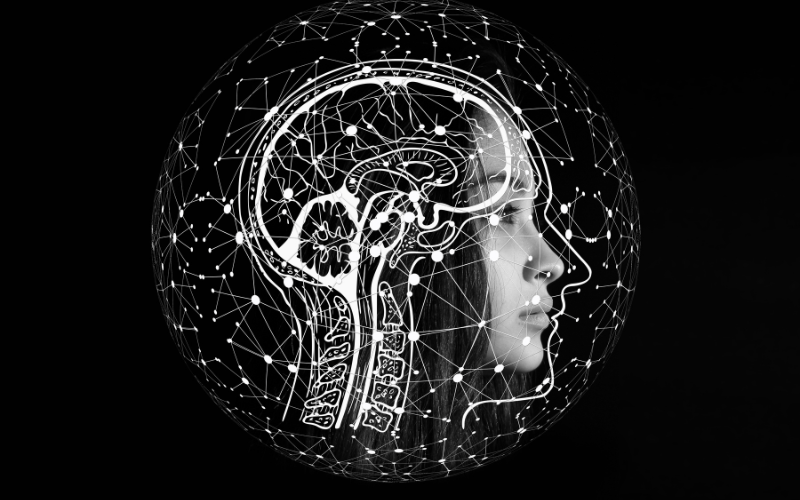
NeuLife Rehab provides one of the best traumatic brain injury rehabilitation services in the state. Our multidisciplinary team of healthcare professionals is expertly trained to provide the physical, medical, and psychological needs of each patient.
Contact us at 800-626-3876 to learn more about our post acute rehab services!
The material contained on this site is for informational purposes only and DOES NOT CONSTITUTE THE PROVIDING OF MEDICAL ADVICE, and is not intended to be a substitute for independent professional medical judgment, advice, diagnosis, or treatment. Always seek the advice of your physician or other qualified healthcare providers with any questions or concerns you may have regarding your health.
A stroke is a serious matter and can happen to anyone at any time. One stroke occurs every 40 seconds in the United States. According to the Center for Disease Control and Prevention (CDC), strokes are the fifth leading cause of death in the United States. The good news is strokes are preventable and treatable with post-acute rehabilitation.
The best brain injury rehabilitation centers offer a comprehensive program specifically tailored to stroke patients. Post-acute refers to a program that patients attend after initial treatment, usually at a hospital or dedicated facility. Patients will have access to medical doctors, physical therapists, psychologists, occupational therapists, dieticians, nursing staff, and case managers to work on their specific needs.
Of course, the goal is to prevent a stroke initially. There are several causes of stroke you should be aware of so steps can be taken toward prevention.
If you have already had a stroke or transient ischemic attack (TIA), you are more likely to have another event. TIAs are mini-strokes that are more common in the elderly population. High blood pressure is also a risk factor for stroke. It is, in fact, the leading cause of stroke (2020). It is vital to have your blood pressure checked regularly and start a medication or lifestyle modification program under the care of a physician.
Certain diseases increase the likelihood of stroke. Heart disorders such as coronary artery disease and atrial fibrillation are significant risk factors. Both are treatable under physician care.
Diabetes increases the risk of stroke. Diabetes contributes to a lack of oxygen to the brain, while also being a risk factor of high blood pressure.
Other diseases, such as sickle cell anemia, can cause a stroke. Due to the abnormal formation of blood cells as a result of the disease, the “sickled” red cells can get caught in blood vessels, blocking flow to the brain, causing a stroke.
Importantly, smoking and obesity are significant contributors to stroke. If lifestyle modifications are necessary to quit smoking or lose weight, a physician can help design a program or prescribe helpful medication, so you succeed.
Signs of a stroke can present similarly in men and women. Numbness or weakness in the face or a body part such as an arm or leg is one sign of a stroke. These symptoms may occur throughout one side of the body. Someone experiencing a stroke may have confusion, trouble speaking, or difficulty understanding speech.
Sudden trouble seeing out of one or both eyes may be an indicator of stroke. The person may also have difficulty walking, dizziness, a loss of balance, or lack of coordination.
It is important to note that someone having a stroke may have one or all of these symptoms. Some people have a stroke without showing any signs at all.
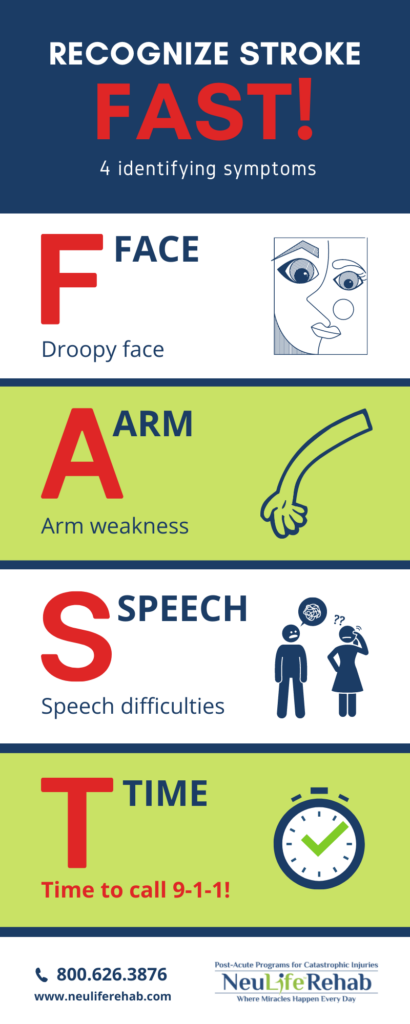
If your loved one has a stroke and is hospitalized, finding the best brain injury rehabilitation center nearby is essential.
NeuLife is an inpatient post-acute rehabilitation center located in Florida. Their facility and multi-disciplinary staff combine to offer the best environment for stroke rehab. NeuLife offers several unique amenities, including trained chefs, arts and crafts, a theatre, outdoor gardens, a game area, and on-site equine therapy. You can be assured if rehabilitation is necessary, you are receiving state of the art treatment in a healing environment. It is what you or your loved one deserves so you may reclaim your life. If you would like more information about our services, give us a call at 800.626.3876 or to make a referral, just click here.
References: National Center for Chronic Disease Prevention and Health Promotion (2020, April 7).: Stroke
The material contained on this site is for informational purposes only and DOES NOT CONSTITUTE THE PROVIDING OF MEDICAL ADVICE, and is not intended to be a substitute for independent professional medical judgment, advice, diagnosis, or treatment. Always seek the advice of your physician or other qualified healthcare providers with any questions or concerns you may have regarding your health.
A seizure occurs when there is an abrupt and uncontrolled electrical activity in the brain. There are many causes of seizure, and one of them is a brain injury. Not all traumatic brain injury (TBI) patients suffer from seizures. Depending on the location of damage in the brain, seizures happen in around 10-50% of TBI patients. In most cases, these will occur within the first weeks following the injury, but it's not uncommon for some patients to have a seizure years after the injury happened.
The risk of developing a seizure, even later in life for TBI patients, will depend on the severity of the brain injury, the depression in the skull, the presence of hematoma, and the depth of wound in penetrating injuries. The risk is actually higher within the first two years post-injury, but it could gradually decline if the patient is taking medications or undergoing therapy.
According to the Epilepsy Foundation, seizures that begin at least a week after the injury often become recurrent, a condition known as Post-Traumatic Epilepsy (PTE). Half of the patients with PTE will experience a remission if they keep up their medications and therapy for at least five years.
There are also other factors that may put a TBI patient at risk of having a seizure, such as:
These conditions can be controlled or avoided with the right therapy and consistent treatment. For some, a lifestyle change, including learning stress-reducing techniques, may also be helpful.
TBI patients often develop warning signs before a seizure occurs. Some refer to this as "preictal auras," which include physical indications like:
Detecting these early warning signs will help mitigate the risks, especially if interventions are made. Prompt medical intervention is often the key to saving a patient's life following a brain injury. Thereafter, timely therapy and rehabilitation in one of the best brain injury rehabilitation centers are vital to the full recovery of TBI patients.
It is essential for patients, and their family members, to learn about their condition and to understand the best measures they need to adopt to prevent seizures.
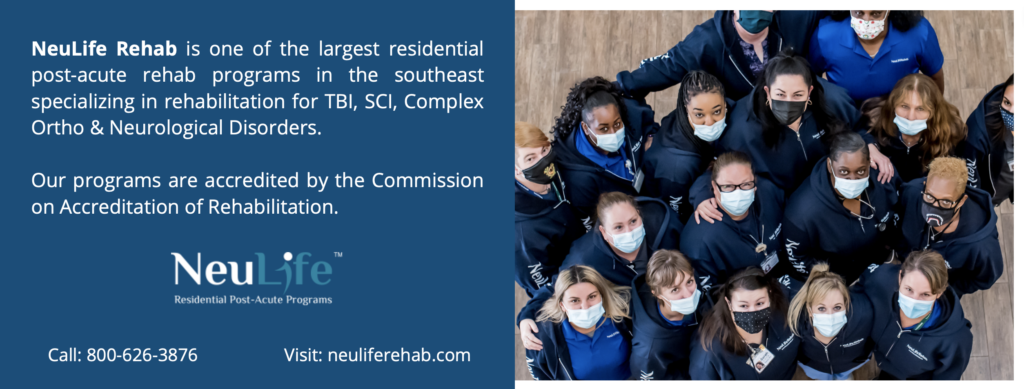
NeuLife Rehabilitation is one of the largest brain injury residential facilities specializing in rehabilitation for a wide range of catastrophic injuries. We are accredited by the Commission on Accreditation of Rehabilitation Facilities (CARF) in Brain Injury Specialty Programs and Residential Rehabilitation to provide high-quality care to our patients.
At Neulife Rehab, our professional staff make sure that you and your family are being taken care of by the best specialists in the area. We encourage you to find out more about our facility and our programs.
NEULIFE REHABILITATION REMAINS OPEN AND DILIGENT THROUGH THE COVID-19 CRISIS. We remain open for business with the ability to admit those in need of ongoing Post-Acute Rehabilitation Services. Our first priority is the safety of our patients and valuable team members.
If you have any questions at all, we are here for you. Call us or make a referral using our easy to navigate and convenient online form. We are looking forward to helping you achieve your recovery goals.
The material contained on this site is for informational purposes only and DOES NOT CONSTITUTE THE PROVIDING OF MEDICAL ADVICE, and is not intended to be a substitute for independent professional medical judgment, advice, diagnosis, or treatment. Always seek the advice of your physician or other qualified healthcare providers with any questions or concerns you may have regarding your health.
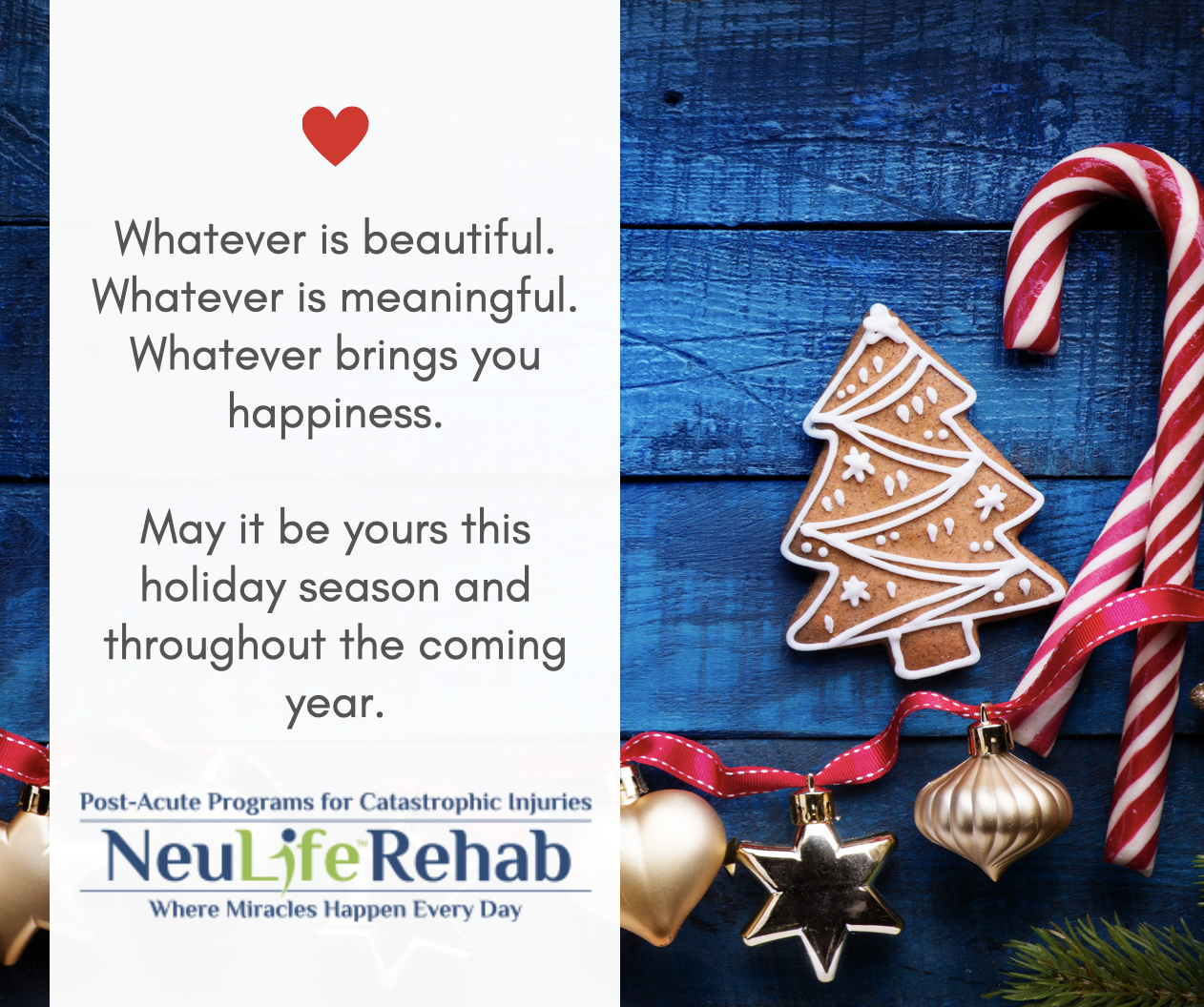
We live in a world where accidents are inevitable. Some smaller accidents happen every day - a paper cut, walking into a cabinet, dropping something, and their consequences are very petite. However, some people experience severe accidents in their lives that can flip their everyday upside down and cause tremendous health issues. For instance, vehicle accidents and sports injuries can lead to acute injuries, injuries that occur suddenly as a result of intense trauma, impact or torsion. A band aid for these kinds of injuries is not enough. People affected by those must be immediately transported to an acute care facility, where their condition will be managed to a point where it is relatively stable.
What happens next? This is where our fantastic post acute rehab programs come in! Our rehab center is perfectly designed to help people recover from an acute injury. Now, let us explain to you in more detail what it is that our amazing multi-speciality staff do.
Acute injuries are those that are caused suddenly as a result of an intense trauma, impact, or torsion. The most common causes of acute injuries are sports and motor vehicle accidents. Acute injuries range all the way from broken bones and sprains, to brain injuries, spine injuries, strokes and neurological disorders.
Therefore, post acute rehab refers to the medical treatment program aimed at returning acute injury patients back to, or as close to as possible, to their pre-injury state. The term “post acute” implies that the patient was discharged from an acute care hospital, or facility. This is the situation more than 10 million Americans find themselves in each year.
The services offered by our post acute rehab program are customised to the needs of the individual patients as each injury and each patient differ. Some patients whom enter our rehabilitation center receive acute care as they come here instead of a hospital.
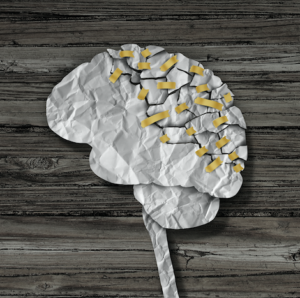
Our NeuLife Rehabilitation clinic specializes in post acute rehabilitation programs for catastrophic injuries, which means we do not often deal solely with common everyday acute injuries like sprains, or muscle tears. Our residential facility is perfect for patients dealing with severe neurological trauma. We offer our services in two types of programs - your doctor will decide which program you belong to depending on your circumstances:
NeuLife Rehabilitation is one of the LARGEST residential post-acute rehabilitation facilities in the Southeast with specialized rehabilitation programs for a wide range of catastrophic injuries. We are accredited by the Commission on Accreditation of Rehabilitation Facilities (CARF) in Brain Injury Specialty Programs and Residential Rehabilitation. Our skilled clinical experts work with each patient individually to create a customized rehabilitation program best suited to the patient’s needs. Everyday we work with the goal of providing our patients with the highest quality of care. We believe that healing, wellness and personal fulfillment are best accomplished in a positive and uplifting therapeutic environment where staff encourage, assist, and support all of their patients. And that is what we do!
To learn more about our facility, our staff and our work contact us, or schedule a tour! You can call us at 800-626-3876, or send us an email on info@neuliferehab.com. Find us at: 2725 Robie Avenue, Mount Dora, Florida 32757.
The material contained on this site is for informational purposes only and DOES NOT CONSTITUTE THE PROVIDING OF MEDICAL ADVICE, and is not intended to be a substitute for independent professional medical judgment, advice, diagnosis, or treatment. Always seek the advice of your physician or other qualified healthcare provider with any questions or concerns you may have regarding your health.
Dance rehabilitation is a form of physical therapy with a strong focus on dance-specific movements. The rehabilitation process can address both new and old injuries with exercises and activities intentionally aimed at aiding the recovery.
Dance Rehabilitation can actually help people walk and balance better. The ultimate goal is to help better design and prescribe rehabilitation to those with reduced mobility.
In the article “Individualized goal-directed dance rehabilitation in chronic state of severe traumatic brain injury: A case study”, published in Helyon (Volume 5, Issue 2, February 2019), the authors present a dance intervention six and a half years after an extremely severe TBI.
The intervention was based on the fact that efficient brain functioning depends on the integrated operation of large-scale brain networks. It used a multisensory and multimodal approach and goal-directed behavior. It lasted four months, including weekly one-hour dance lessons with the help of a physiotherapist and a dance teacher.
The main assumption was that the process of recovery might still be accelerated during the post-acute rehabilitation process, even after a long and successful period of intensive multidisciplinary rehabilitation. The individually tailored intervention was based on the dance and music material created by the patient himself before the accident.
Several studies have demonstrated that music- and rhythm-based interventions have positive effects on treating and rehabilitating neurological conditions in post-acute rehabilitation.

The goal-directed dance rehabilitation intervention was tailored according to the needs and strengths of the rehabilitee. The 20-week intervention included a weekly 60-minute dance lesson. The results of the intervention were very promising. They were assessed by various healthcare professionals:
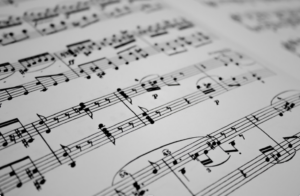
According to the article, by providing emotionally-charged, memory-retrieving multisensory information (dancing and music) to the multimodal brain regions through repeated rehearsal, it may be possible to restore, or strengthen the connections within and between various brain areas more efficiently.
Another positive conclusion is that the memory system might be activated during dance rehabilitation during the post acute rehabilitation phase of TBI, by allowing several pre-injury learned components into the process.
The article gives us hope, introducing yet another component into post-acute rehabilitation of those suffering from TBI, or other neurological disorders.
NeuLife Rehabilitation is one of the largest residential post-acute rehabilitation facilities in the Southeast with specialized catastrophic rehabilitation programs for a wide range of catastrophic injuries.
Our programs for Post Acute Rehab in Florida are customized to meet the individual needs of each patient, and care plans are structured to promote the highest level of functional independence and successful community reintegration. With the skills and experience of our highly trained team of clinical experts, we are able to treat a wide range of diagnoses and injuries at our brain injury facility.
If you have any more questions concerning dance rehabilitation, Post Acute Rehab in Florida, or any other issue regarding brain injury, call us to make an appointment today. You can also schedule a tour to visit our brain injury facility.

The material contained on this site is for informational purposes only and DOES NOT CONSTITUTE THE PROVIDING OF MEDICAL ADVICE, and is not intended to be a substitute for independent professional medical judgment, advice, diagnosis, or treatment. Always seek the advice of your physician or other qualified healthcare providers with any questions or concerns you may have regarding your health.

We know that choosing the next step in your recovery from a catastrophic illness or injury is complex. Together, we can help you take the next step.
Contact us with any questions today.